Looking to buy a crystal chandelier or any other light fixture that uses crystals? Do you already own crystal lighting? Either way, this guide to chandelier crystals will tell you everything you need to know about those pretty little sparklers—including, perhaps most importantly, how to clean them so they keep looking their best.
Chandelier crystal basics
All crystals used in lighting are made from glass. But, the glass used to create these crystals is really different from the glass used in windows, drinking vessels, eyeglasses and so on. Chandelier crystals contain lead oxide, which gives it more weight and refraction than normal glass, making it more brilliant, prismatic and sparkly.
(Don’t be scared by the word lead! Lead oxide is safe for the health of consumers.)
The rule of thumb is that the more lead oxide there is in a crystal, the better it reflects light. Lead oxide amounts are measured in percentages and there are 3 different types of lead oxide content: crystalline, half lead and full lead.
Crystalline is glass with 6 to 10 percent lead oxide. However, American standards allow clear glass with any amount of lead oxide to be called crystal.
Half lead crystal means 24 percent to 30 percent lead oxide.
Full lead crystal is anything over 30 percent lead oxide.
There are also 3 different ways to create chandelier crystals: machine-cut, hand-cut and hand-blown.
Machine-cut crystals have sharp facets, visual purity and precise polishing.
Hand-cut crystals are sometimes created by traditional methods using irons and sandstone wheels for cutting, followed by polishing on a wood wheel embedded with marble dust. Other times, though, hand-cut crystals are made with modern methods too. Types of hand-cut crystals include Crystalique, Czech, Heritage, Regal and Turkish.
Hand-blown crystals are, of course, blown instead of cut, leading to rounded, smooth edges. The craftsmanship results in heirloom-quality pieces that are truly works of art. Murano crystal is a great example.
Chandelier crystal types
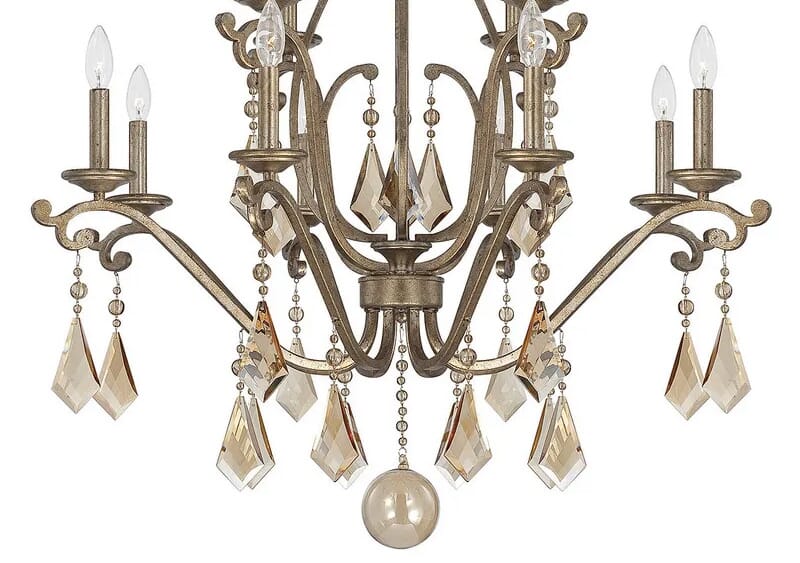
Colored crystals are created by coating color onto crystals and are used in many different types of chandeliers. Pretty much any color you can think of can be shown in a colored crystal. In the Savoy House Rothchild shown here, the crystals are colored in a champagne hue.
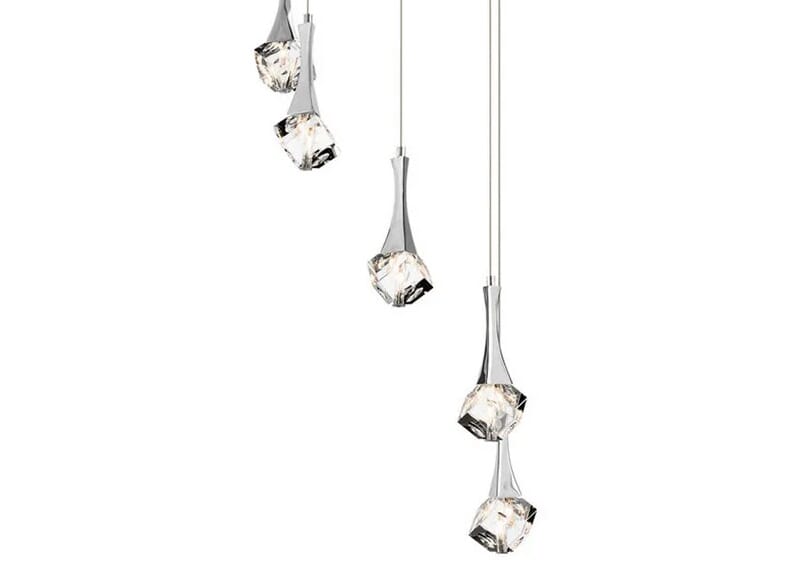
K9 crystal is a great choice for value-minded consumers. It is mass-produced, though cut and polished to look like more expensive grades of crystal. K9 crystal is used in the Elan Rockne shown here.
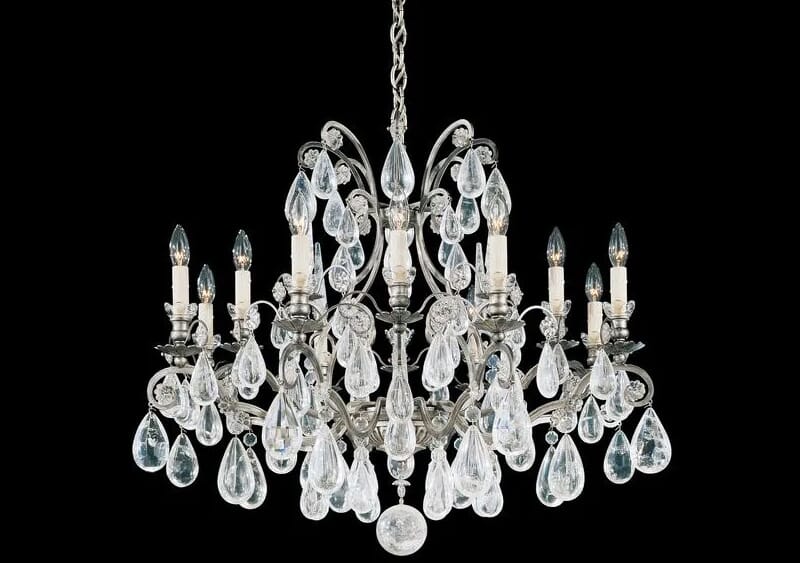
Rock crystals (shown from the Schonbek Versailles) were used in the earliest crystal chandeliers, which date back to the 16th century and displaced candles as the method of amplifying and reflecting light. Rock crystals are actually as old as the Earth itself and each one is uniquely created by geological events that took place over millions of years. Rock crystals are natural and must be mined, cut and polished by gem cutters.
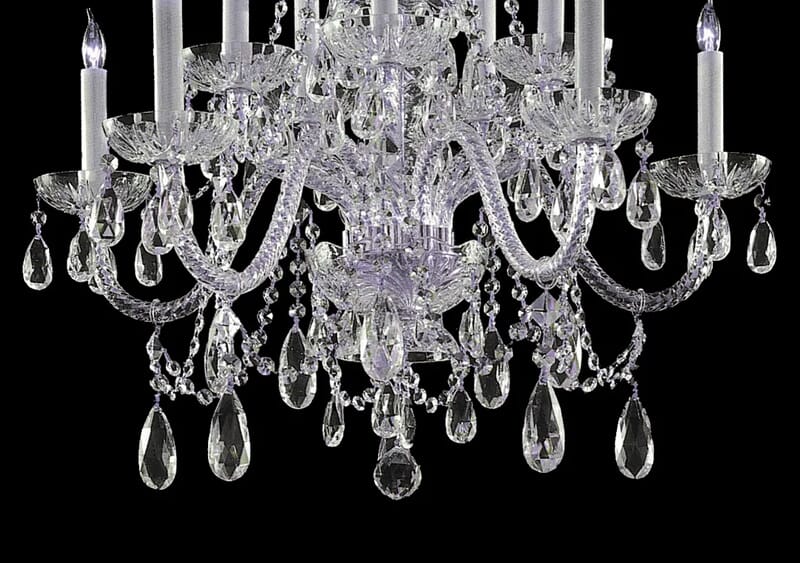
Swarovski is the finest crystal in the world and probably what you think of when you think of crystals. Manufactured in the Austrian Alps, it is clear, flawless, uniquely pure and brilliant. It has more than 30 percent lead oxide content and is machine-cut. Swarovski crystals can come in colors, too. Pictured is the Crystorama Traditional Crystal.
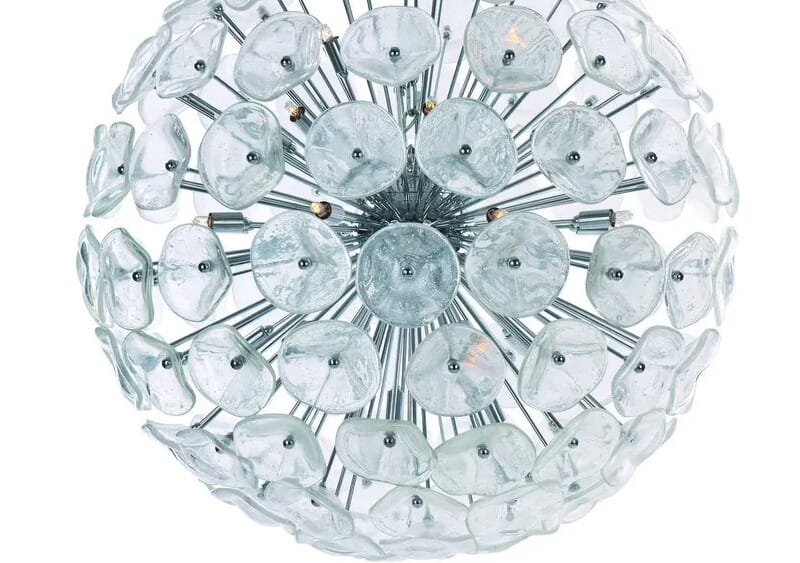
Venetian crystal is molded and not cut. It often has round edges from fire polishing, plus it has soda and lime instead of lead oxide, so it looks softer. It is not as brilliant as cut crystal, but is a budget-friendly choice. Similarly, Murano crystals are mouth-blown and can be shaped into circles, flowers and other shapes, as seen in the ET2 Fiori. They can also be colored.
Chandelier crystal cuts
Chandelier crystals are also called pendalogues. Here are some common cuts of pendalogues:
- Baguette: thin, long, rectangular, usually flat on one side and faceted on the other. Sometimes also called colonial.
- Cut ball: orb-shaped, featuring many triangular facets.
- Diamond: shaped much like the gem of the same name, featuring top and bottom angles of the same size.
- Finial: a small and circular crystal with triangular facets, similar to cut ball, usually hangs alone at the bottom of a chandelier.
- French: a highly detailed pear shape that is flat on one side, raised and faceted on the other side.
- Hexagonal prism: long, thin drops with six-pointed tips that are cut at an angle.
- Icicle: short, thin and dramatically pointed.
- Kite: kite-shaped (unsurprisingly) with many small similarly-shaped facets. It’s similar to diamond cut, but different because kite cut has top angles that are longer than the bottom angles.
- Octagon: eight-sided, featuring various different shapes of facet together.
- Pear: wide, teardrop-shaped with diamond-shaped facets. May also be called Swedish drop. Similar to, but not as heavily detailed as, French cut.
- Rosette: flower-shaped.
- Spear: longer than icicle cut, but also thin and pointed.
- Square stone: four-sided, faceted to look like it has a letter X inside.
Chandelier crystal care
There are two different ways to clean chandelier crystals. One is easier and one is more involved. You can use either—the choice is yours and yours alone.
The easier cleaning method: Fill a spray bottle with a solution that is one part isopropyl rubbing alcohol to three parts distilled water. Then, using a clean white cotton cloth or gloves, spray the cloth or hand with the solution and wipe the crystal. Follow immediately by wiping the crystal dry with a dry cloth or glove.
The more involved cleaning method: Remove the crystals and label where they all go on the fixture. Use lukewarm water with Palmolive to clean each crystal, rinse and dry with a soft cloth and put the crystals back on the fixture using your labels.
Want to learn more about chandeliers? Read our Chandelier Buying Guide.
Need advice? Call us up at 1-866-688-3562 or email customerservice@lightsonline.com. You can also leave a comment on this post.

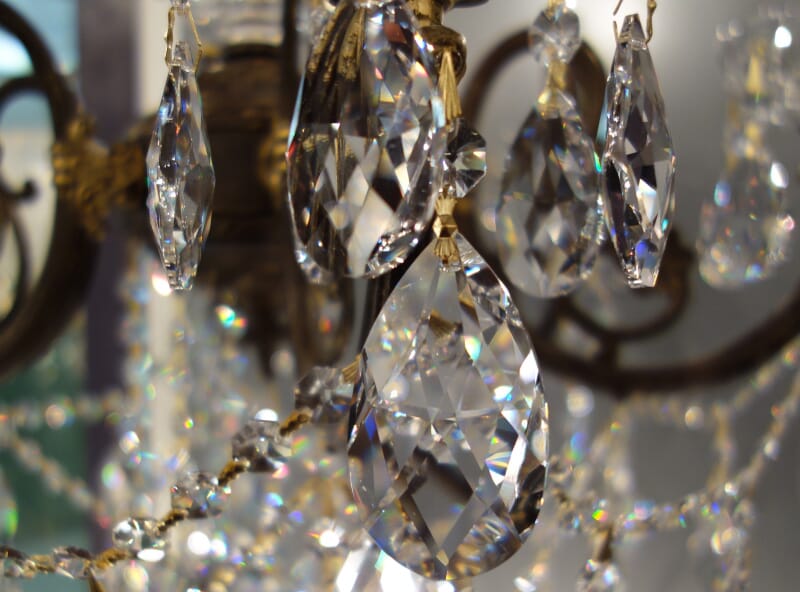



November 18, 2022
[…] have also been some updates to the shapes of crystal. Lighting designers are now using glass rods and chunks of crystal to lend a more rugged, masculine […]